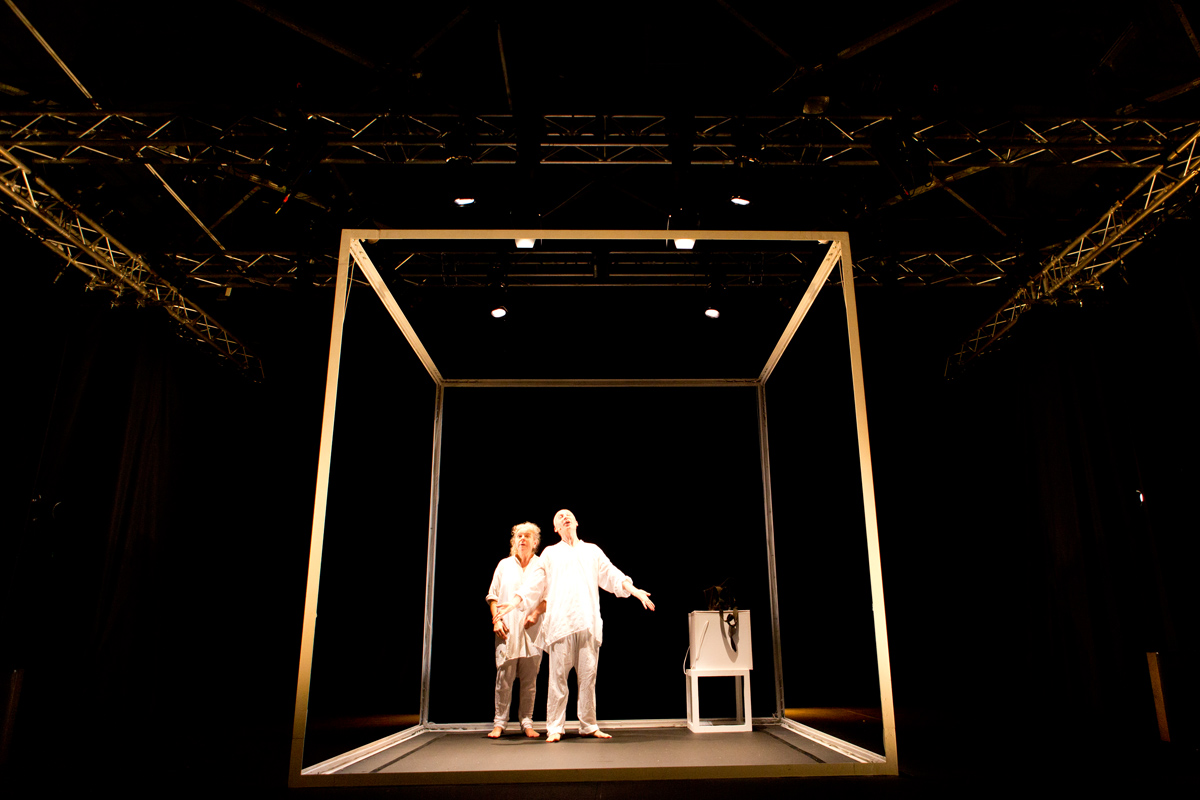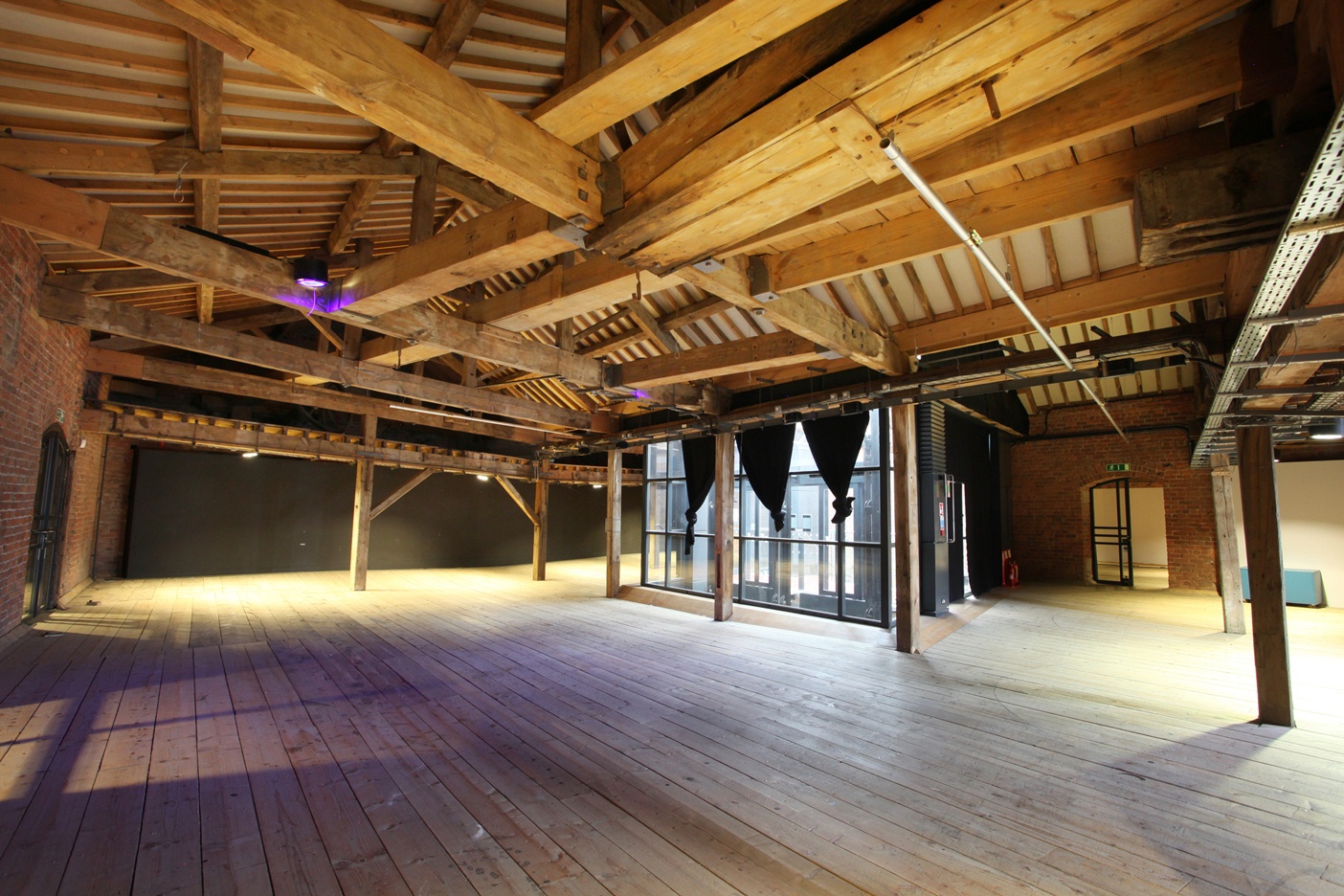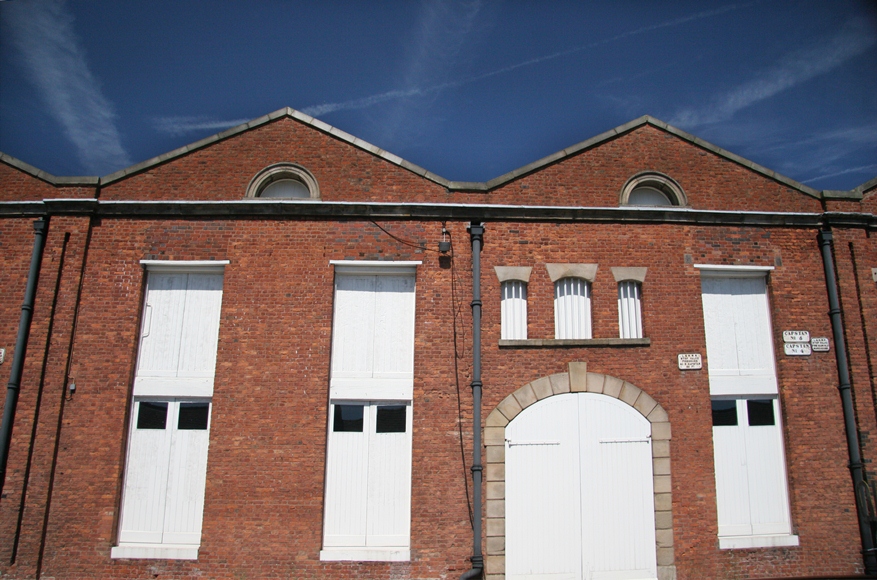Blending maths with theatre, it explores big questions about our universe – is it infinite? Does it have an edge? With a stark and simple set, X&Y creates its own little ‘universe’ inside a brightly lit cube, making it perfect for unconventional ‘pop-up’ theatre spaces. For its London run at the Science Museum earlier this month, it was performed in a converted empty exhibition gallery.

The Manchester Science Festival takes place in venues across Greater Manchester from 24 October – 3 November and X&Y is taking up residence for 5 days at MOSI’s stunning Grade 1 listed 1830 Warehouse at Liverpool Road Station.
Liverpool Road Station was the Manchester terminus of the Liverpool and Manchester Railway, the world’s first purpose-built passenger and goods railway. The original coach offices (passenger station), warehouse and intervening viaduct survive, making this the world’s oldest railway station. All four buildings and the two viaducts are listed in recognition of their historic and architectural importance. When British Rail closed the station in 1975, the two oldest buildings were in a very poor state of repair. Since then the whole site has been carefully restored.
The aptly named ‘1830 Warehouse’ was built in 1830 and it was the world’s first railway warehouse. Earlier railways, which mainly carried coal, did not need warehousing but the success of the Railway’s goods services created an immediate need for more storage.
On 3 April 1830, the Liverpool & Manchester Railway Company placed a notice in the Manchester Guardian inviting tenders for the construction of five brick warehouses. This description is misleading as the resulting building was actually one warehouse divided into five bays. Five firms submitted tenders ranging in cost from £12,000 to £14,000 (approx. £1.16 million to £1.35 million today).
The second lowest bidder, David Bellhouse Jnr, gained the contract. He had taken over his father’s building and contracting business in about 1820. His father, David Bellhouse Snr., was also a leading local timber merchant. These family business connections were valuable because the appointed contractor was responsible for procuring the necessary building materials, other than bricks, which were supplied by the L&MR Company. The stated completion date was 15 August 1830, giving less than four months for construction. The schedule was tough, but Bellhouse managed it. The demanding schedule was doubtless one of the reasons why the 1830 Warehouse has a timber frame rather than a fireproof frame of brick and iron. A timber frame was faster to fabricate and assemble.
The 1830 Warehouse was used for the storage of a variety of goods. Cotton, one of the L&MR’s most important cargoes, was only stored there until two Cotton Stores were completed in 1831.
Two stock books found in the warehouse in 1991 reveal the type of goods stored there in 1885 and 1905. They list a wide range of goods including various meats, bananas, chemicals such as caustic soda and bleach, clog blocks and bottles. Oyster shells and cockleshells were found in the building, suggesting that it was also used for storing shellfish.
As the Manchester Science Festival takes over MOSI and other venues for 10 days, the 1830 Warehouse will be the home of Marcus du Sautoy and Victoria Gould and the creative team for X&Y.
Extracts from this blog from The Museum of Science and Industry in Manchester

